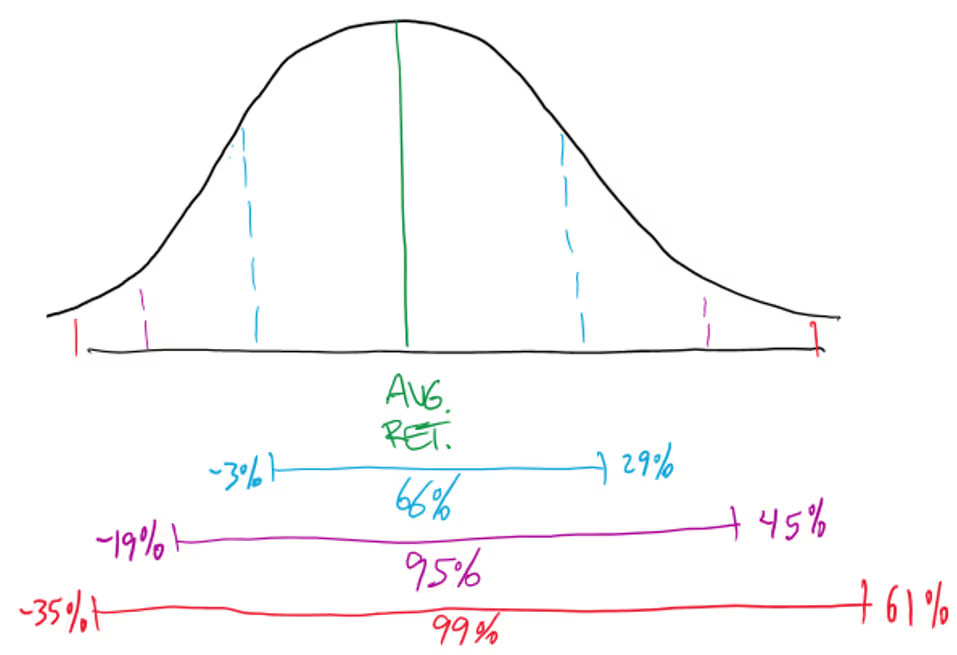Risk vs Variability
Understand the key difference between investment risk and variability and why confusing the two can lead to costly mistakes.

Risk ≠ Variability: Why That Matters for Your Investments
When it comes to investing, many people confuse risk and variability. These are not interchangeable terms. Misunderstanding the difference can lead to costly mistakes.
Risk: The Potential for Loss
Risk means there is a chance you could lose money. It is the possibility that your investment does not deliver the return you expected. Worse yet, that you lose some (or all) of your initial investment. There is no return guarantee. Risk is about uncertainty and the potential for permanent loss of capital.
Variability: The Ups and Downs
Variability refers to the investment’s change in value over time. Investments can fluctuate in value. Think of it like a roller coaster, which goes up and down and all around.

This image shows an example of variability, which can be calculated for most investments by using an average return and a standard deviation. For this hypothetical, we use an average return of 13% and a standard deviation of 16%. The bell curve provides approximate (not exact) figures. The purpose is to provide you with a general expectation of return variability over time. Of course, realized returns may be different, and potentially outside the ranges shown.
When it comes to understanding variability, it is important to have a reasonable expectation of potential investment return outcomes over time, both on the upside and downside.
Why This Difference Matters
I believe this is one reason why so many investors find themselves in trouble and make the “big mistake.” Their investments and return expectations are not aligned. If a realized return is outside (greater or less than) the investor’s return expectations, that is when uneasiness arises. Sometimes this leads to poor investment decisions.
What You Can Do
- Understand what you own. Know which investments are likely to fluctuate and by how much.
- Align your expectations. Don’t expect high returns without some bumps along the way.
- Have a plan. A long-term investment strategy helps you ride out the variability without overreacting to short-term changes.
Final Thought
Certain investments have greater potential for risk and variability than others. It’s important to do your homework, stay informed, and build a portfolio that matches your goals and temperament.
Ready to align your investments with your goals?
If you're unsure whether your portfolio matches your risk tolerance or long-term plans, let’s talk. I help tech professionals build investment strategies that balance growth potential with peace of mind.
Schedule a Free Intro Visit.
The foregoing content reflects the opinions of TwoTenPlanning and is subject to change at any time without notice. Content provided herein is for informational purposes only and should not be used or construed as financial, legal, tax, or investment advice or a recommendation regarding the purchase or sale of any security. There is no guarantee that the statements, opinions or forecasts provided herein will prove to be correct. Past performance may not be indicative of future results. All investing involves risk, including the potential for loss of principal. There is no guarantee or assurance that diversification, strategies based on Nobel prize-winning research, or any investment plan or strategy will be successful. Past performance may not be indicative of future results. Discuss your specific tax issues with a qualified tax professional. Converting from a Traditional IRA to a Roth IRA is a taxable event.
Our Most Recent Blogs
Check out our most recent blogs where we share insightful articles, trends, and news from a Christ-centred perspective in the financial industry.
“For we are His workmanship, created in Christ Jesus for good works, which God prepared beforehand that we should walk in them.”






